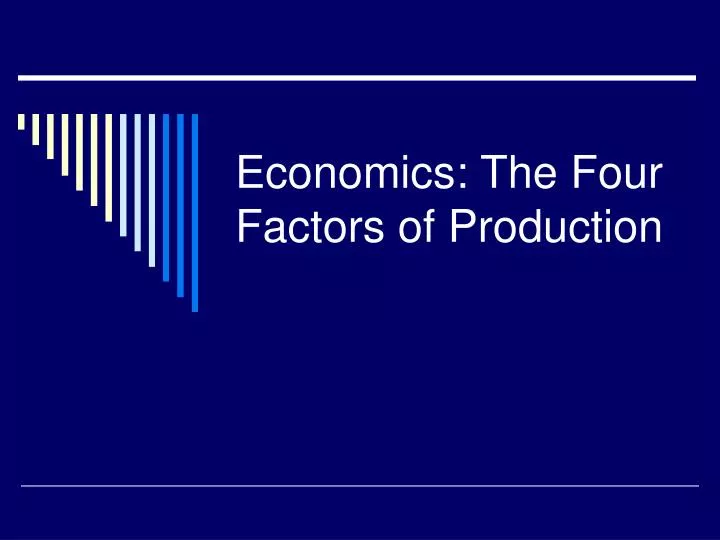

Capital describes all man-made goods that are used in the production process. Labor refers to the human effort that is used in the creation of goods and services. soil, water, air) that can be used in the production process. natural resources) describes all naturally-occurring resources (e.g. The classical factors include land, labor, and capital. The four factors of production describe all the inputs or resources that are used in the production of goods and services. Hence, it can increase production efficiency and act as a factor of production. The reasoning behind this is that entrepreneurship often leads to innovation, new processes, or new products.

EntrepreneurshipĮven though entrepreneurship is not part of the classical factors of production, it is often added to the list as a fourth factor. It is important to note that capital is by definition a derived factor of production since it requires the combination of land and labor (i.e. The capital stock may include goods such as machinery, tools, vehicles, semi-finished products, etc. CapitalĬapital as a factor of production describes all man-made goods that are used in the production process. Wages are a critical aspect because they are necessary in order to be able to distinguish between labor and leisure activities. The employees receive wages in exchange for their efforts. It includes all physical and mental efforts that are made by employees during the production process. Therefore, the producer combines all the four factors of production in a technical proportion. This is evident from the fact that no single commodity can be produced without the help of any one of these four factors of production. Labor as a factor of production refers to the human effort that is used in the production of goods and services. Production is the result of co-operation of four factors of production viz., land, labour, capital and organization. perfectly inelastic, (2) it is immobile, which means it cannot be moved, and (3) it is passive in nature because it cannot produce anything on its own. Land has three important characteristics: (1) its quantity is fixed, i.e. that can be used in the production process. It includes all naturally-occurring resources such as soil, water, air, plants, etc. 266.Land as a factor of production is sometimes also referred to as natural resources. Bookman, ‘The split-level Soviet economy’ in Fortune (Chicago, Oct 1961) p. Galbraith, The New Industrial State (New York, 1968) p. Witchel, The American Economy: analysis and policy (Lexington, Mass., 1969) p. Cairncross, Introduction to Economics (London, 1960) pp. Lykov in Soviet Weekly (London, 18 July 1970).Ī. Boretsky, ‘Comparative progress in technology, productivity, and economic efficiency’ in New Directions in the Soviet Economy, Joint Economic Committee, United States Congress (Washington, 1966) pp. Humphreys, ‘American self criticism’ in The Times Educational Supplement (London, ), p. Berliner, ‘Managerial incentives and decision making’ in Comparisons of the United States and Soviet Economies ( Papers), Joint Economic Committee, Congress of the United States (Washington, 1959) p. Pokshishevskiy, in Soviet News (London, ) p. Pokshishevskiy, ‘On basic migration patterns’ in Soviet Geography, V (1964) no. Kaser, Soviet Economics (London, 1970) p. This process is experimental and the keywords may be updated as the learning algorithm improves. These keywords were added by machine and not by the authors. Education improves the quality of the labour force and technology increases the productivity of capital. Education and technology also qualify in some classifications, but education may be regarded as an aspect of labour, and technology as an aspect of capital. It is more common today to confine attention to capital and labour, although management is often regarded as a third factor.

Land is fixed and cannot be imported or exported, but natural resources can be brought in from other countries land can be used as it is, resources have to be developed. Modern economists sometimes substitute ‘natural resources’ for ‘land’, which widens the concept considerably. The land on which a factory is erected plays a wholly passive role, and in the USSR until recently it was totally ignored as a factor, since not even rent was paid for it. Land was an obvious factor in the age of agriculture, but its significance is much less in an industrial economy. Traditionally the factors of production were considered to be land, capital and labour.


 0 kommentar(er)
0 kommentar(er)
